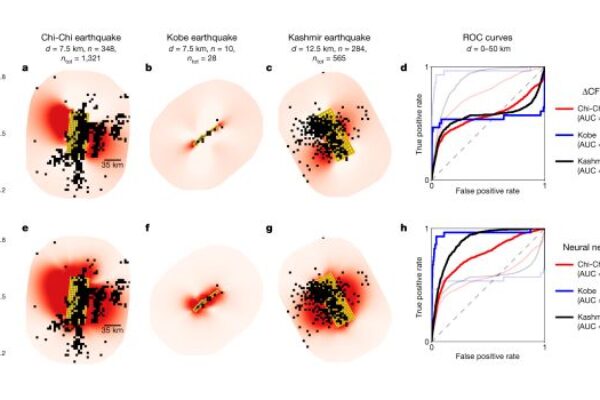
Forecasting earthquake aftershock locations with AI
Aftershocks following significant earthquakes often not only cause significant additional damage but can also significantly hamper recovery efforts. While scientists understand and can explain the timing and size of aftershocks, forecasting the locations of these events has proven more challenging.
In an effort to better predict where these aftershocks might occur, researchers at Harvard teamed up with machine learning experts at Google to see if deep learning could be effectively applied to the problem. They began by analyzing a database of information on more than 118 past earthquakes from around the world, the Finite-Source Rupture Model Database.
They then applied a neural network to analyze the relationships between static stress changes – i.e., changes in the normal stresses that, along with friction, prevent a locked fault from slipping on its own – caused by the main shocks and aftershock locations. The algorithm, they say, was able to identify useful patterns.
“The end result was an improved model to forecast aftershock locations and while this system is still imprecise, it’s a motivating step forward,” say the researchers. “Machine learning-based forecasts may one day help deploy emergency services and inform evacuation plans for areas at risk of an aftershock.”
In addition, the researchers add, their research helped them to identify physical quantities that may be important in earthquake generation. When they applied neural networks to the data set, they found that they were able to look “under the hood” at the specific combinations of factors that it found important and useful for that forecast, rather than just taking the forecasted results at face value.
“This opens up new possibilities for finding potential physical theories that may allow us to better understand natural phenomena,” say the researchers. “We are looking forward to seeing what machine learning can do in the future to unravel the mysteries behind earthquakes, in an effort to mitigate their harmful effects.”
For more, see “Deep learning of aftershock patterns following large earthquakes.”
Related articles:
Earthquake prediction with machine learning shows promise
‘Billion sensor’ earthquake observatory uses existing optical fibers
Magnetic field tech looks to ‘hover’ buildings in earthquakes
IoT friendly seismic sensor helps prevent secondary damages
 If you enjoyed this article, you will like the following ones: don't miss them by subscribing to :
eeNews on Google News
If you enjoyed this article, you will like the following ones: don't miss them by subscribing to :
eeNews on Google News




